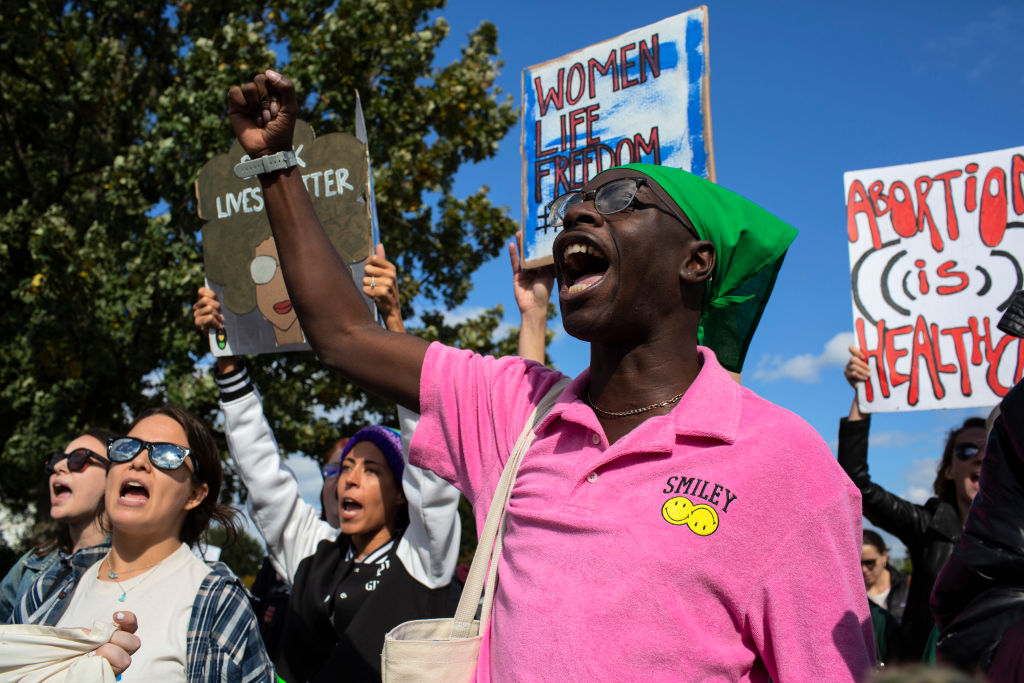Pro-Choice
Related: About this forumAbortion Rights and the 'Quick Child': The Misuse of History in Wisconsin's Abortion Ban
(lengthy, informative read)
Abortion Rights and the ‘Quick Child’: The Misuse of History in Wisconsin’s Abortion Ban
11/7/2022 by Kimberley Reilly
The history of Wisconsin’s 1849 abortion law shows us that abortion into the second trimester of pregnancy has a long legacy in the state and the nation.

Abortion rights supporters rally on Capitol Hill in Washington, D.C., on Oct. 8, 2022. (Probal Rashid / LightRocket via Getty Images)
When the U.S. Supreme Court ruled in Dobbs v. Jackson and overturned Roe v. Wade, the state of Wisconsin immediately reverted to an 1849 criminal statute which makes abortion illegal without exceptions for rape or incest and deems abortion a felony. Thanks to this state-level trigger ban, women in Wisconsin lost access to abortion with startling speed. Today, only in cases where the procedure is deemed life-saving, or when it is “advised by two other physicians as necessary,” is a so-called “therapeutic abortion” authorized.
One of the most enraging aspects of the Supreme Court’s decision was its misuse of history. As ludicrous as it sounds to look back to the mid-19th century for sound medical guidance, the 1849 law in Wisconsin actually protected a woman’s right to abortion through the first and second trimester, reflecting a long history of abortion rights and choice in the state. The 1849 law made “the willful killing of an unborn quick child” an act of first-degree manslaughter. A “quick child” was a fetus that had quickened, meaning that the 1849 law preserved the common law right of abortion until quickening. It wasn’t until 1858 that Wisconsin lawmakers removed the reference to quickening and prohibited the abortion of an “unborn child”—language that remains in the statute today. This distortion of legal history exposes the fallacy of conservative claims to tradition and legal precedent.
One of the most important rationales for the conservative justices who overturned Roe was ‘history.’ In Dobbs, the Court went beyond the question they were asked to decide, which was whether the state of Mississippi could place a ban on abortion after the 15th week of pregnancy. Instead, the majority struck down the long-standing constitutional right to an abortion, which the Court first recognized in Roe v. Wade in 1973 and had preserved through subsequent rulings up through Whole Women’s Health v. Hellerstedt in 2016. In Dobbs, the majority overturned Roe and relegated to each state legislature the decision of whether Americans still possess this fundamental right.
Writing for the majority, Justice Alito argued that “a right to abortion is not deeply rooted in the Nation’s history and traditions.” This is incorrect. The Constitution does not include the word abortion, just as it does not discuss contraception, marriage, paternity, adoption, guardianship and a host of other legal issues related to reproduction. Laws pertaining to these “domestic relations” were part of the common law—a body of law first developed through judicial decisions in English courts, and later adopted and elaborated by colonial and American judges.
. . . .
The right to privacy and reproductive freedom are deeply entrenched in our nation’s history, and now is the time to challenge erroneous narratives which suggest otherwise.
https://msmagazine.com/2022/11/07/wisconsin-abortion-ban-history-usa/